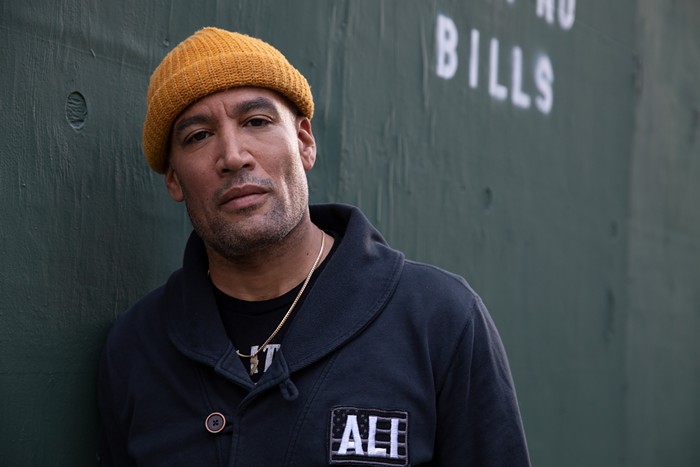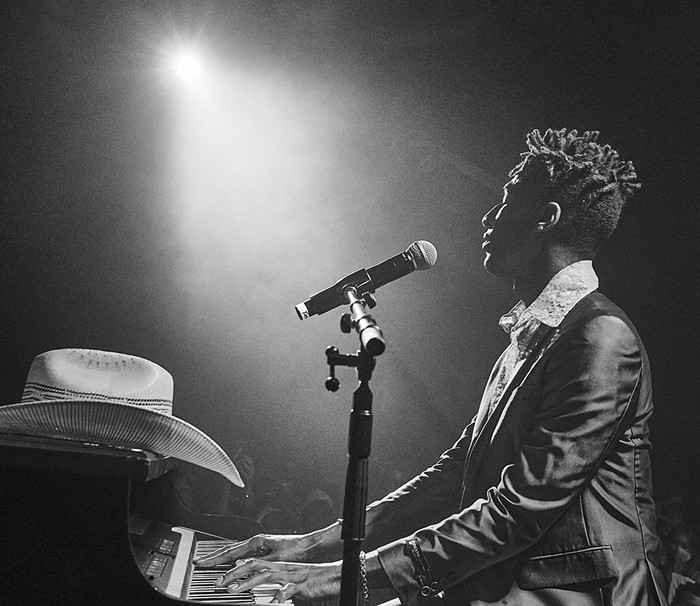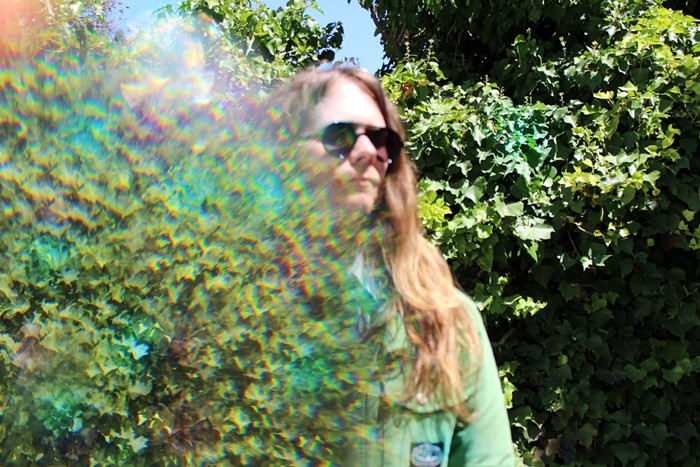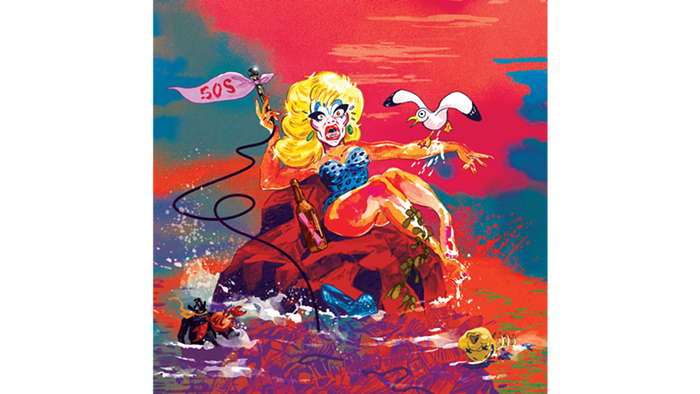BRANDON SEABROOK speaks in much the same way he plays the banjo or guitar: quickly, energetically, with repeated phrases interrupted by scattered asides. For example, ask him how he started on the path to becoming one of the most exciting jazz players around:
"I guess it was probably a visual thing, watching music videos," Seabrook says, speaking from his Brooklyn apartment. "There was always music around the house, always music on. I don't know, my brother and I got into music and no one else in my family was into music. But it was a visual thing—I saw it and then I started listening."
Those engaging conversational curlicues are present in his music, too. On his dynamic recent album Sylphid Vitalizers (released this past June), the 39-year-old creates thick clouds of sound via rapid-fire strumming, augmenting it with spiraling solos and drum machine bursts. It hews closer to avant-metal than jazz, allowing him to showcase the versatility of his four-string tenor banjo.
"You can make it sound like an oud or a bazouki or some weird electronic instrument," Seabrook says. "It's super percussive too, so you have to use a tremolo technique with your picking hand to get any sustain at all. That's all over the album, that kind of brrrrrrrrrrrr sound."
His part-noisenik, part-shredder style on both guitar and banjo has turned Seabrook into one of the most in-demand sidemen in New York's experimental jazz scene. While his Portland date is a solo set, he can typically be found on any given night trading licks with fellow six-stringer Mary Halvorson, or adding spurts of chaos to drummer Vinnie Sperrazza's post-bop compositions.
"It took a few years to find some stuff that was going to last and become bands and stuff," he says. "Playing both banjo and guitar and being versatile in that way has helped a lot. Some people only know me as a banjo player and some people only know me as a guitar player. But that helps. To get gigs. Playing more than one instrument helps."



















